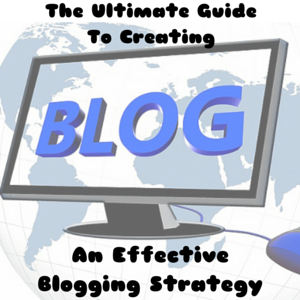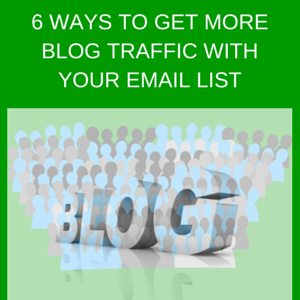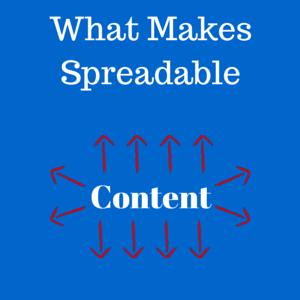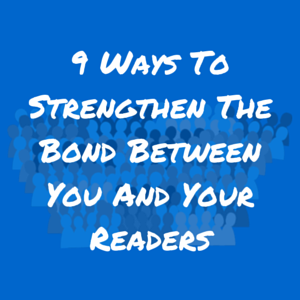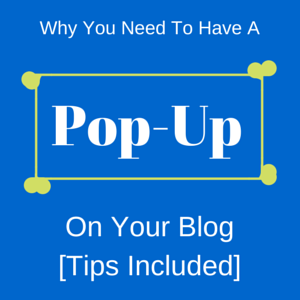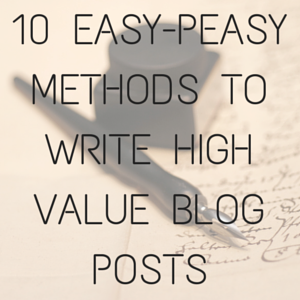
Content has always been king, and it will continue dictating which bloggers become successful. The bloggers who write the best content are the ones who we remember, and we return to these bloggers’ blogs numerous times. Every new blogger wants to know how to become a successful blogger, and the answer almost always points back to the fact that content is king.
We know that content is king, but how to we go about writing better content? How do we go about writing the type of content that leads to returning visitors? In this blog post, I will discuss 10 methods you can use to make your content king.
#1: Read Other People’s Content
The best way to become a better writer is to surround yourself with the best. The people you surround yourself with typically determine what type of person you become. Go on Amazon, look for books in your niche, and buy some of them. Read thousands of blog posts on the web from your favorite bloggers.
By surrounding yourself with high value writing, you will gradually pick up on what makes the writing so valuable. Each of the writers may follow a common writing style that makes their writing eloquent. Not only will you gradually pick up on what works for other writers, but you will also learn more about your niche. Taking the time to read books every day has allowed me to learn so much about my niche that I didn’t know back when I started. The only way to move forward is by obtaining new knowledge and implementing the right knowledge in what you do.
#2: Write Longer Blog Posts
When I wrote two blog posts per day for this blog, it was a big commitment. I was getting better at blogging, but I know a lot more now than I knew then. What I often did was write concise blog posts that rarely exceeded 500 words. Although some blogging styles encourage blog posts under 500 words, I became a better writer by increasing the length of my blog posts. Now, I always strive to surpass 1,000 words for every blog post, and some of my blog posts exceed 5,000 words. Writing longer blog posts forced me to spend more time writing content, and as I spent more time writing content, my writing improved.
When I wrote longer blog posts, I also went more in-depth on certain tips that I would normally skim over. I provided my personal experiences and other people’s case studies that added an entirely new meaning to my content.
#3: Provide A Story
Do you like a good story? Then again, who doesn’t? Some of the best stories have been passed on from generation to generation, and some stories that were told thousands of years ago still get told to this day (although the very old stories are mostly told in history classes). You don’t have to turn your blog post into a novel, but you can provide a story of a personal experience that applies to the blog post’s topic, or you can provide the case study of someone else’s story that applies to the blog post’s topic.
Providing stories within your blog posts has the potential to increase the value of those blog posts by providing your visitors with inspiration or a relatable experience. One time, I wrote a concise blog post about how urgency at TJ Maxx increased my productivity. I was in a desperate need for an updated wardrobe, but I got to the store only an hour before closing time. I somehow found and got what I was looking for within that timeframe. Maybe you haven’t had the same stress at TJ Maxx, but my story is a relatable experience for many people. Whether you were at a Target as it was about to close or had to prepare an email blast with 15 minutes to spare, you know what it feels like to suddenly get a productivity spike as the deadline rapidly approaches.
#4: Include Easter Egg Jokes
I sometimes reference kryptonite in my blog posts. Each time I mention kryptonite, I usually turn it into an Easter Egg Joke. Easter Egg Jokes are jokes that are hidden within the content, so not everyone will know that a joke is in the works. Disney movies are filled with Easter Egg jokes that children wouldn’t understand so adults could still enjoy watching the same Disney movies they watched as children.
Although it isn’t always easy to include an Easter Egg Joke within your blog posts, including them will strengthen the relationship between you and the visitors who get the joke. The relationship between you and the visitors who don’t see the Easter Egg Joke won’t be changed because of one Easter Egg Joke.
#5: Write Every Day
Practice makes close to perfect, and the best way to do better at anything is to practice it every day. Right now, I want you to think about the greatest skill you have. Then, I want you to think about how much time you spent practicing on your greatest skill compared to the amount of time you spent practicing on your least skillful area. You should quickly realize that you spent a lot of time practicing on your greatest skill but virtually no time practicing on your least skillful area.
If you want to emerge as a power blogger who writes high value content, then you must practice writing every day to reach that point. No matter what day of the week it is, and no matter how much homework I have during the school year, I am always writing niche-related content every single day. On some days, when I don’t find as much time to write, I typically write 2,000 words. When I have an entire day to write, I can write over 10,000 words in a given day. By spending so much time writing content every day, it has now become easy for me to write high value content. If I really wanted to, I could write high value content with my eyes closed. By writing millions of words on my computer, I have memorized the location of every key on my computer. I wrote that entire sentence with my eyes closed.
#6: Do Additional Research Before Clicking Publish
After you write a blog post, do some additional research about your blog post’s topic and look for insightful information on the web. When you do additional research, you are looking for statistics and facts that you can use to attract more interest in your content. When I talk about the power of Pinterest, I almost always mention that 80% of pins are repins to show how easy it is to go viral on that social network. Providing this statistics strengthens my claim that Pinterest is a powerful social network. Imagine how different the blog post would be if the statistic doesn’t get mentioned. I would just be stating my opinion without supporting it.
#7: Be More Descriptive
When you describe events, methods, or anything else, be as descriptive as possible. Being descriptive allows you to write in great detail, and this great detail can make a visitor feel as if he/she were with you at an event or have a stronger connection with a personal story or case study. Your writing will improve as you become more descriptive because being descriptive requires you to spend more time thinking about what happened and creating sentences in such an eloquent manner that the visitor feels a strong connection with what you write about.
#8: Write A Strong Intro
The introduction is an important part of your blog. It decides whether a visitor continues reading or leaves your blog before reading another word. Your first sentence must captivate your visitor with a question, a cool statistic, a strong statement, or a small insight that leads into the larger insights in the blog post. The best way to write a strong intro is to read other blog posts in your niche and take note of which introductions grabbed your attention. My introductions are based on a combination of different elements in dozens of other bloggers’ introductions combined with my own style.
#9: Write A Strong Closing
A strong closing entices people to engage with your content with a series of questions while quickly summing up the entire blog post. Mastering the closing not only leads to more engagement, but people who like your closing will remember how great the blog post was, and these visitors may decide to look at more of your content. The stronger your closing, the longer someone will stay on your blog.
#10: Proofread
It would be such a same if you wrote an excellent blog post but didn’t take the time to proofread it. Spell check only does part of the job. Spell check wouldn’t alert me about “same” because it is spelled correctly. The sentence should read “It would be such a shame if you wrote an excellent blog post but didn’t take the time to proofread it”
The only way to catch those types of mistakes that hurt the value of your writing, regardless of how valuable your insights are, is by proofreading your content. Not only can proofreading expose the mistakes that a spell check can’t account for, but you will also find sentences that can be structured better and think of a new tidbit that can increase the value of your blog post. Never underestimate the power of proofreading. It is the one thing that most bloggers forget to do.
In Conclusion
Content is king, and making your content king will allow your blog to dominate your niche and attract a large audience. You can get blog traffic by promoting your content, but if your content does not provide value, you won’t get the returning visitors who eventually choose to buy your products. Successful blogging isn’t about getting traffic. It’s about getting traffic that sticks. You want returning visitors who appreciate what you do instead of one-time visitors who don’t appreciate the value that you provide.
Making your content more valuable for your targeted audience will entice those people to stick around, engage with your content, and tell their friends about what you do.
What do you think makes up valuable content? Which of your blog posts are you the most proud of? Which blog post on the web is your favorite (if it’s not one of mine, I won’t get offended)? What tips do you have for writing more valuable content? Please share your thoughts and advice below.
